Many of us believe that only people who have the technical knowledge or are close to understanding the technical aspects can use a laptop. But the point is, any medical student who doesn’t need to be as tech-savvy as everyone else still needs a multi-purpose laptop.
So to make it easier for these users, we have put together a list of the best laptops for medical students. When teachers saw the positive effects of using laptops for students, they gradually began to move from a traditional teaching model to a digital classroom.
Now you can easily present in front of the course via PowerPoint. Documents can be produced from Word or Excel. Their teachers even distribute the workload through discussion forums.
Instead of buying hardcover books and bringing them to school every day, you ultimately have access to a digital library that can be downloaded exactly to your functional and convenient laptop.
The ever-changing healthcare environment, shifting societal expectations, reshaping the roles of physicians, in addition to the changes faced by medical science, are contributing to a change in the landscape of healthcare education. In this way, we can push the limits of the use of technology in this educational environment.
Using digital learning devices, the goals of medical education are now to improve decision-making, improve coordination of skills, enhance psychomotor skills, practice crucial events through simulations, and integrate technology into the easy learning process.
As a medical student doing experiments, presentations, and also the vast majority of your studies, you will almost certainly require that you have your own laptop.
You can use these laptops to access your study materials, take online classes, give presentations, and many other important needs. At that time, she can find much more information on the Internet than in any of her textbooks.
Also, if you are just starting out in medical school, buying a good laptop can be helpful not only to boost your studies but also for personal entertainment.
Here is the list of the top best laptops for medical practice.
1: MICROSOFT SURFACE BOOK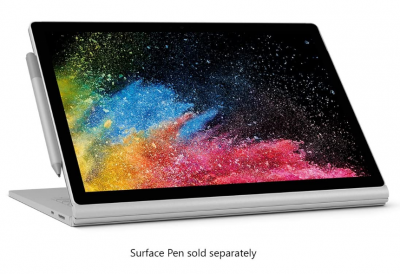
It will not be a mistake to say that the Microsoft Surface Book 2 is a very clear representation of the futuristic ideology of the organization, as it offers four different ways to use it.
The advanced design of this Microsoft Surface Book2 features flexible articulation. Therefore, a person can use it in four ways such as laptop, tablet, and sight.
A rotary button on the keyboard allows the screen to split and form a tablet. Let the studio fold the screen and use it for drawing as well as playing games.
View mode involves detaching the screen, flipping it, and repositioning it so that others can complete your project or whatever you want to talk about. This multimode use makes the Microsoft Surface2 the perfect laptop for medical school students.
Measuring 12.3 x 9.1 x 0.9 inches, the laptop has a lovely exterior. Also, the laptop has an excellent 13.5-inch Pixel Sense touch screen that offers great comfort and a great grip feel.
In addition, the screen resolution of 3000 x 2000 pixels presents a high-quality perspective. 1600: 1 color contrast ratio matches image quality by providing vividness and vibrancy.
The simple trackpad and backlit keyboard further increase ease of use. In addition, the critical minimum travel space allows users to practice typing faster.
This is very beneficial for medical school students because they have to complete more tasks in shorter periods of time. With Intel Core i5 and i7, the Microsoft Surface Book2 performs at an incredibly fast pace.
Handle processing-intensive jobs in just seconds. Therefore, it meets the requirements of medical school students who have to work in demanding programs. 16GB memory makes it easy to run multiple programs at a faster speed.
In addition, NVidia GeForce and Intel Graphics allow users to play games, edit photos and movies comfortably. This is a vital attribute for all health school students who enjoy editing and playing games in their spare time.
The 1TB storage area means that the consumer can download multiple programs, photos, and documents. With a Microsoft Surface Book2, a medical student can safely record information all year long without much worry.
Also, the laptop offers around 17 hours of movie playback. Therefore, students can work on the laptop for several hours before having to charge it. Consistent battery life helps keep work flowing and improve quality.
Microsoft Surface Book2 is a great alternative for most medical students if they don’t have financial limitations. A longer battery life, ample storage space, fast processor, and four-way driving style are some of the standout features.
However, it is not lightweight in design, so students may feel a bit overwhelmed when carrying it from place to place.
Pros
- Can use a laptop, tablet, view, and study styles
- Modern exterior with high-quality touch screen
- Powerful processor
- Improved graphics performance with NVidia GeForce and Intel Graphics
- Large storage and memory space
- Long duration battery
- Extensive connectivity
- Rear webcam
Cons
- Expensive laptop
- It is not a lightweight design
- Specifications Summary
- Editor’s rating: 10
- Processor: Intel Core i5 and i7
- RAM memory: 16 GB
- Storage: 1 TB
- Screen: PixelSense touch screen
- Photos: NVidia GeForce and Intel Graphics
- Weight: 3.62 pounds
- Battery life: up to 17 hours
2: APPLE MAC BOOK AIR
This product includes the best features anyone could wish for, and the medical student can be assured of the wide range of availability and convenience the device provides.
The battery life is particularly high, allowing you to use the device for up to 12 hours, after a first full cost. It follows that your shares for the day are well covered, with little or no blackout, up to twelve months a day.
You can resume lessons, browse lesson notes and worksheets, and find tutorial content, all without having to control your laptop.
The features of the Mac Book Air are an Intel Core i5 processor, which makes it easy to quickly process every action you want to take, from on-screen navigation to images and more.
There is an SSD storage attached to your device, which with the installation of the 5th Gen Intel processor allows you to do it all quickly, allowing us to put it in our best laptop for your medical records.
Note that the speed of the combination is approximately 17 times faster compared to a 5400 RPM storage hard drive. The screen included in a Mac Book Air ranges in size from 1400×900 pixels, all coming to you on a 0.19-inch thick screen.
It certainly facilitates the clarity you want to see every time you use the laptop.Some other important features are the backlit multi-touch touch keyboard, 8GB 1600MHz RAM, etc.
Pros
- The lightweight construction allows for easy freedom from place to place, without feeling like you’ve completed an additional fee.
- The internal solid-state storage (SSD) input is considered an advantage of this device over what is found in the companion provisions for notebooks.
- macOS, where the MacBook Air also runs, is highly protected and not as vulnerable to damage from Windows-specific viruses and malware.
- The battery life is particularly impressive, allowing you to use the device for many hours.
- Hardware items are made from the best materials available.
Cons
- You will find restricted applications provided in relation to the system running Windows â„¢.
- Internal SSD storage is limited, which is really a disadvantage for large storage tasks.
- The laptop is expensive; in fact, it is still among the most expensive for medical students.
3: ASUS ZENBOOK 14
Asus is just another brand that offers the best laptops for doctors on the market. Like practically all brands compete in the industry. And there is no question that everyone should be sure that they are delivering the best of the best laptops for doctors.
The unit has that kind of cutting edge and innovative technology that you would love. Asus has made it much easier for everyone to take advantage of its innovative devices and technologies.
When it comes to durability and reliability, Acer is also on the list. So let’s take a look at exactly what the ZenBook’s features and specs are.
To get started, let’s take a look at what it looks like. Let me inform you that the ZenBook is very stylish and slim. That is why it is quite light. Therefore, it does not prevent you from wearing it. It is easy to take your tablet to schools and medical schools.
Second, the laptop comes with a 14-inch screen dimension. The ZenBook has an ideal screen size that will not give you any problems when viewing the reports of its victims.On top of that, the system has an 8th Gen Intel Core i7 processor with an 8MB cache around 4.6 GHz.
Let’s talk about the RAM included in this best laptop for doctors. Multitasking is very important to doctors. For this function, they will need to hold a laptop with higher RAM in their hands. However, ZenBook has made it even easier for you. Yes, it also has 16GB of RAM, which is pretty great for multitasking.
On top of that, it weighs 2.6 pounds. It’s really amazing and it makes it easier. Therefore, you can take this mobile device anywhere you want.
All vital ports are on the device. Asus makes sure to provide many different vents on its best medical laptops. So you will get a USB 2.0 port and 2 USB 3.0 interfaces. Along with this, it also includes a map.
Pros
- First of all, it includes an Intel UHD 620 graphics card. The imaging card takes your display quality to a whole new level.
- Second, it has decent built-in speakers.
- In addition, it contains an LED numeric keypad.
Cons
- The laptop offers almost no Thunderbolt ports.
- Besides that, its screen is quite dark. And you will be worried when viewing content on your own laptop.
- On the other hand, the best laptops in your school should think of a bright screen.
4:Â DELL PRECISION 5520
Dell Precision 5520 is a fantastic alternative for a medical student who needs a slim, light, professional, and luxurious laptop with the capacity of a mobile workstation. The laptop has a modern carbon fiber and alloy chassis and high-quality internals.
The Precision 5520 features 1920 × 1080 resolution, a bright, vibrant, and sharp panel that delivers impressive element detail. In addition to the full HD screen, you can opt for the Ultra HD touch screen, 3840 x 2160 resolution.
While there’s no room for the number pad, the backlit keyboard gives you the typing relaxation you need to do your homework easily, thanks to its easy-to-press buttons. The Precision touchpad even offers multi-gesture capabilities for added convenience.
Open 15 Opera windows, stream YouTube videos, and train your task at the same time, and you still won’t experience any latency with the beat. The Precision 5520 is equipped with an Intel Xeon E3-1505 v6 3.0 GHz processor and 32 GB of RAM. So you only get a mobile workstation.
The processor paired with the Quadro M1200 GPU makes this laptop ready for processor-intensive software.
Pros
- Fast performance
- Quality display
- Really lightweight device
- Exceptional GPU functionality
Cons
- Sound emissions when carrying out various programs
- Expensive
5:Â LENOVO IDEAPAD 330
As we talked about laptops in our lab, most people agreed that we don’t like any of these older Lenovo products. We see them as mid-range competitors who can’t make it to the top.
But over time, the products get better and better, which is why they are often one of our top picks when it comes to laptops. Its best laptop for health students is the Lenovo Ideapad 330.
Lenovo has also improved the online design so that this laptop looks sleek and contemporary at exactly the same time, with the entire reddish top component and an augmented gold base.
For its capacity, it includes a 256GB SSD, which should be sufficient for most health students, along with 8GB of RAM. The 7th generation AMD A9-9425 processor can handle frequencies up to 3.7 GHz.
This processor is also, for example, better than the i5 than among our previous necessary options, however, it uses more battery power.
While the large 15.6-inch HD display is one of the best for your laptops, the highest resolution is slightly lower than some of our other options, at 1366×768 pixels. You can obviously connect it via HDMI to a different display and then you can get 4K too.
What sets it apart from other laptops is the fact that this is one of those rare models that has retained the optical drive (DVD-RW), which we all love quite a bit. Includes Windows Home 64-bit installed.
Pros
- Bluetooth
- Great webcam
- 4-in-1 card reader (MMC, SD, SDHC, SDXC)
- Get the optical drive
Cons
- Without Full HD
- Audio quality is not the best
6: LG GRAM
The LG Gram has been touted as a great laptop for medical schools by students around the world. Good grades speak for themselves, and many users simply have great things to say about the Gram.
This device is ultra-light and packs an incredibly long battery life of 18.5 hours. Although it only weighs 2.5 pounds, students love that they can get the most out of a 15.6-inch display.
Another interesting feature of the Gram is the performance of its touchscreen. Other than the Surface Pro 7, it’s the only laptop we’ve covered that has a Full HD touchscreen.
Plus, it has cool features like a fingerprint reader for added security, Thunderbolt 3 connectivity, as well as a backlit keyboard and touchpad. You’ll have all the connectivity you could want with all the USB-C, Thunderbolt 3, HDMI, and MicroSD ports.
Spec-wise, it’s hard to beat the Gram. It’s built with 8th production i7 processing, 16GB of RAM, and a full terabyte of all SSD data. Among LG laptops, medical students rank it among the best, and this is largely due to the superior performance of the Intel Core processor.
It runs on Windows 10 Home, which means you’ll be able to sign in quickly with the fingerprint reader and Windows Hello. There is only one small flaw in this Gram. The screen is highly reflective, so it can be difficult to see it in poor light.
As long as you use the laptop in the classroom or at home most of the time, that’s not a big deal (you just won’t be able to do a lot of work in the park or on campus grounds. games). ).
Pros
- Incredibly long battery life
- Lots of SSD storage
- Large but light screen
- Lots of RAM
- Thunderbolt 3 connectivity
Cons
- Overly reflective screen
- Expensive
7: MICROSOFT SURFACE PRO 6
Microsoft Surface Pro 6 is one version of this list that is a fantasy for many medical students. Because Well, because students can use the device in three different ways and it takes less than three seconds to flip it from laptop to study computer or tablet.
With this version, you can operate anywhere effortlessly, thanks to its lightness. Occasionally, students try to install laptops.
However, with the Surface Pro 6, it sticks to you more. The version has enough power to adapt to any task. Plus, it packs a next-gen element and setup that gives you speed and power every time.
If you love to use the camera, it’s easy to reap all the benefits of this laptop in terms of running more efficiently and multitasking than ever before. The model includes approximately 13.5 hours of battery life and 128 GB SSD storage.
Pros
- It’s very versatile
- Has a good performance
- Ultra-thin and lightweight design
- You can configure it with useful accessories
Cons
- The back of the laptop will be hot
8:Â ASUS CHROMEBOOK FLIP
This laptop is best on sale on Amazon for a fantastic reason. It’s pretty small with just a 12.5-inch screen, but it’s a convertible laptop, which means you can switch to tablet mode just by turning the screen.
It’s a Chrome book, so it works with Chrome OS. The laptop weighs 2.65 pounds, which is ideal to take anywhere and everywhere – on campus, whether for your fieldwork or just lounging on your floor.
Its battery lasts about ten hours. It’s a powerful processor, so it opens and opens programs quickly. The ability to switch from a tablet to a computer is invaluable, especially for bringing a medical student on the go.
The screen maybe Gorilla Glass, which means it’s designed to be rough and unlikely to crack.
Pros
- Longer battery time
- Small and productive
- Lightweight
- Fast processor
Cons
- Smaller screen
- Maybe not a lot of vents
- Without quantity buffer
9: LENOVO YOGA 730
This laptop is a great option if you are looking for a laptop under $ 700 with decent performance and flexibility. Coming from the Lenovo Yoga line, the device can be used in different angles and shapes as desired.
As a doctor, you can get a lot of benefits from owning such a device, considering that the Lenovo Yoga 730 also performs well with resource-intensive tasks.
An Intel Core i5 processor with a 1.6GHz base clock speed powers this flexible laptop, but the addition of 8GB of RAM and 256GB of SSD is good from a performance point of view.
Having more RAM might be better, but you’ll pay less than $ 1,000 for this 2.60-pound device in total. And since it runs on Windows 10, you won’t have any trouble with the fluency of the user interface.
Compared to the other machines on the list, Lenovo Yoga 730 has a larger screen. With a size of 15.6 inches and a resolution of 1920 x 1080, the Lenovo IPS touchscreen is truly a bargain.
The screen quality is so good that some customers even compare it to the Microsoft Surface Pro. Like the Pro, this Yoga laptop also has integrated graphics inside.
It comes with Thunderbolt-compatible ports for increased connectivity and speed. While the fingerprint reader allows for quick login to Windows, the backlit keyboard also offers incredible key movement.
Also, we can’t miss the goodness of the flexible design. Even weighing in at 2.60 pounds, the Lenovo Yoga 730 managed to pack a battery that delivers 11.5 hours on a single charge.
Pros
- Flexible layout
- Good autonomy
- Touch screen support
- Illuminated keyboard
- Economic
Cons
- Graphics are not so attractive.
10: HUAWEI MATEBOOK 13
One of Huawei’s successful companies in the laptop industry, the Huawei MateBook 13 Signature Edition is without a doubt one of the best Windows laptops out there.
If you are a physician who values ​​portability and the power of connectivity, this package can meet all of your requirements. Compared to Mac Book Pro, you don’t have to spend that much here either.
Although the Huawei Mate Book 13 Signature Edition is powered by a 1.6GHz Intel Core i5-8265U processor, its inclusion of 8GB of RAM and 256GB of SSD storage would give you a smooth Windows experience.
Huawei claims to have used an innovative cooling design, improving performance several times over. Also, not much performance should be expected when considering the compact design of the laptop.
The laptop comes with what Huawei calls the Full view touch screen. In keeping with all current trends, there are smaller bezels and an incredible 88% screen-to-body ratio.
Thanks to these additions, the 2160 x 1440 resolution looks pretty impressive. Although the touch screen works quite well, you do not have the opportunity to play games with this computer.
When it comes to design and connectivity, the Huawei Mate Book 13 Signature Edition resembles the Apple Mac Book in a strange way.
Although the device has fewer ports, Huawei provides a Mate Dock 2.0 with the laptop, giving you access to HDMI, VGA, and USB Type-C. On top of all that, this 2.87 lb device is said to offer an incredible 10 hours. of operation. battery life, which is pretty good for an Ultrabook.
Pros
- Elegant design
- Touch screen
- Innovative cooling technology
- Offer an adapter with the package
- Good autonomy
Cons
- Lack of dedicated graphics
BUYING GUIDE
Choosing the best laptops for medical students
Not all students need the same laptop, and being a medical student you will need to have a specific laptop that will never let you down and will always be there for you in the most critical times.
You’ll probably end up being some sort of doctor, but trust us when we say we are “doctors” for laptops and know exactly what you’re looking for.
Therefore, here are 4 most crucial things to look for in your next laptop (and rest assured that the laptops in this article offer these things).
Power
You might be buried in the Microsoft Office suite most of the time, but you’ll definitely need the full power of the laptop to help you run some important software.
Therefore, going for at least a 7th or 8th gen Intel i5 processor is the way to go. While the graphics card might not be that important to you, installing an integrated graphics card like Intel HD or UHD will do just fine.
On the other hand, make sure to maximize RAM and get a decent amount of SSD storage for optimal working efficiency.
Versatility and compactness
As a student, you will be working at a real desk for the least amount of time (and you probably already know that).
You will find yourself studying, taking notes, doing your homework, and even doing important chores mostly on the go (from your dorm, on a train, in the school library) and that is why you need a laptop that will be comfortable wherever you are. Use it.
If you look at any of the laptops shown to you in this article, you will notice two things that they have in common. They’re all very light and thin – and that’s something you should be doing.
Ease of use
Even if you get a laptop with a fairly powerful and versatile/compact setup, you will need it to be easy to use. When we say easy to use, we mean everything from its keyboard, its trackpad, even its software.
You want to get comfortable with a laptop and get a laptop that will make you do everything on it, rather than a laptop that will give you headaches.
It is true that you will have to get used to most of the new laptops you get, but the laptops listed in this article are designed with ultimate precision so you know you will never have a single problem using it. .
Additional features
Not all students will need the same functionality. That’s why additional features that are sold separately are a good thing.
The Surface Pro 6 is a great example of a laptop that has plenty of accessories available to purchase separately, and it’s up to you which ones you’ll need the most. For some students, it will likely be a mouse or maybe a pen, while others will need more than that.
Frequently Asked Questions
Q: What Makes a Good Laptop for Medical School?
You’ll want a laptop that’s very reliable, starts up quickly, offers fast and smooth performance, and is light and even thin so you can carry it anywhere you need it.
Studying and doing schoolwork on the go will often be as much as using your laptop in the classroom, so it needs to be versatile.
Q: What are the most important components for a medical school laptop?
Investing in a laptop with a quality screen is definitely one of the most important components, as sometimes you will be staring at your laptop for hours.
Other than that, investing in a laptop with an excellent processor and SSD will deliver decent performance that is worth your time.
Q: Are additional accessories needed?
Additional accessories are not necessary, but depending on your use of the laptop, they are useful. Some of the more common accessories are a mouse, mouse pad, and a great pair of noise-canceling headphones.
Conclusion
As a student, you are probably looking for a laptop that will serve you for a specific purpose. Therefore, choosing the laptop computer is very easy once you know what you will be using it for.
If you choose one of those laptops on the list, you won’t go wrong. But it’s important to choose the one that suits your style and offers everything you are looking for.
Whether it’s the longest battery life or a 2-in-1 laptop with a touch screen, the choice is yours. Whatever your pick of the best laptop for medical school, stick to it and you will do just fine!

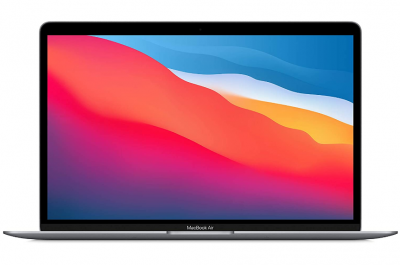
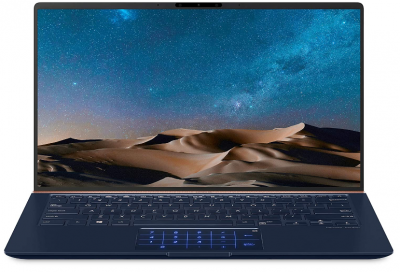
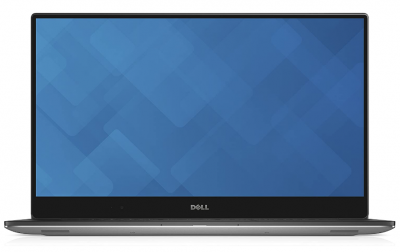
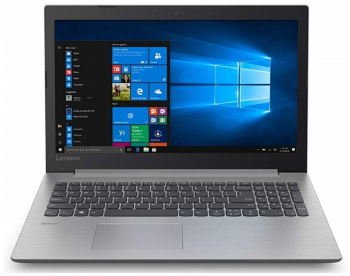
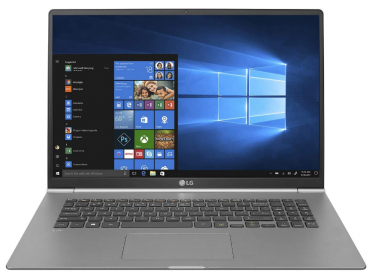
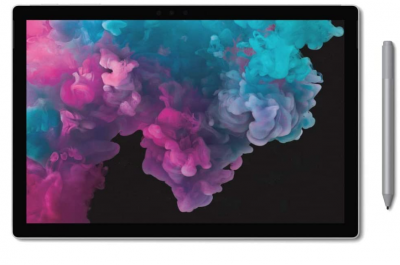
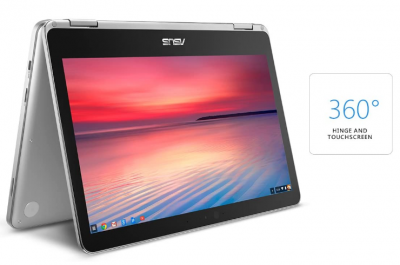
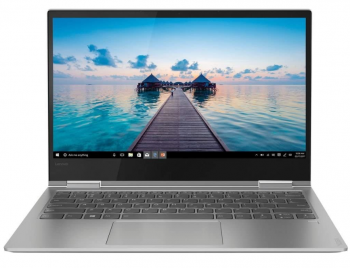
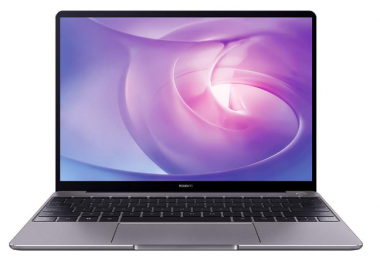
Leave a Reply